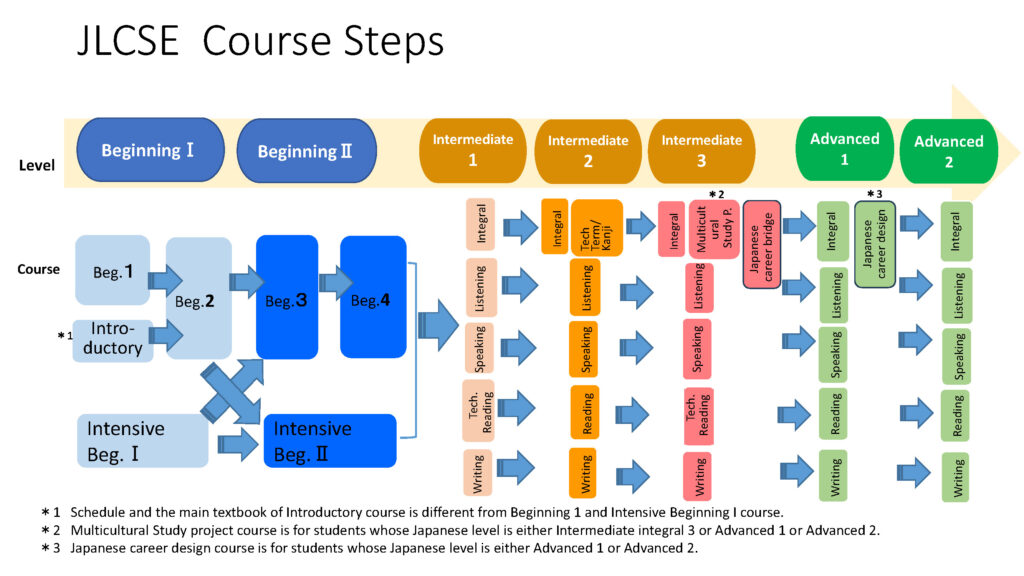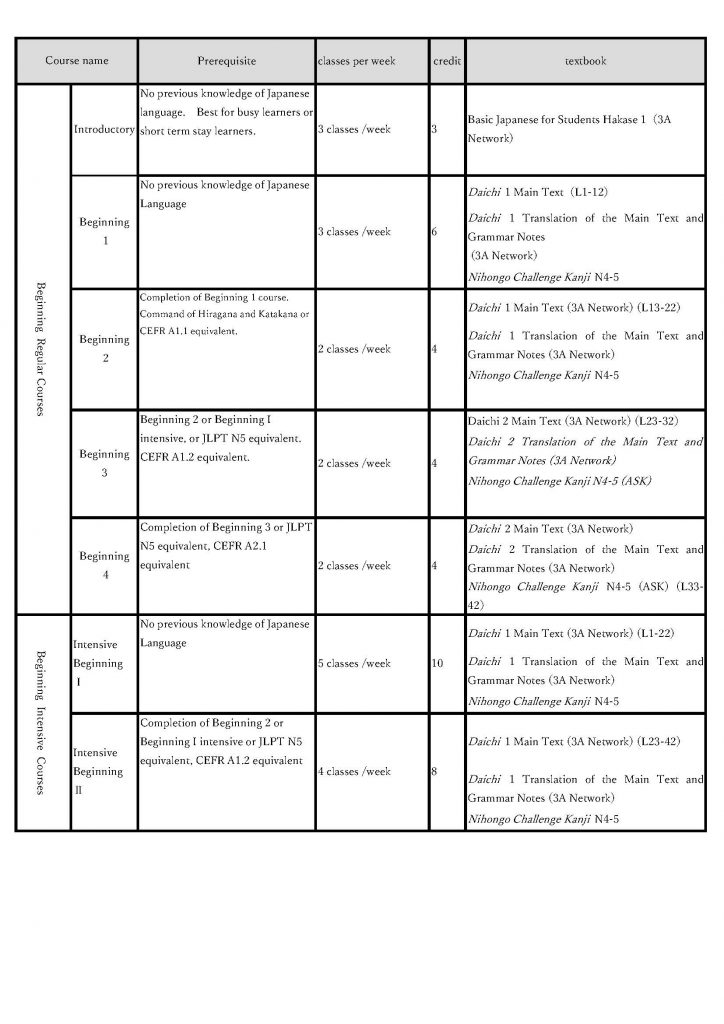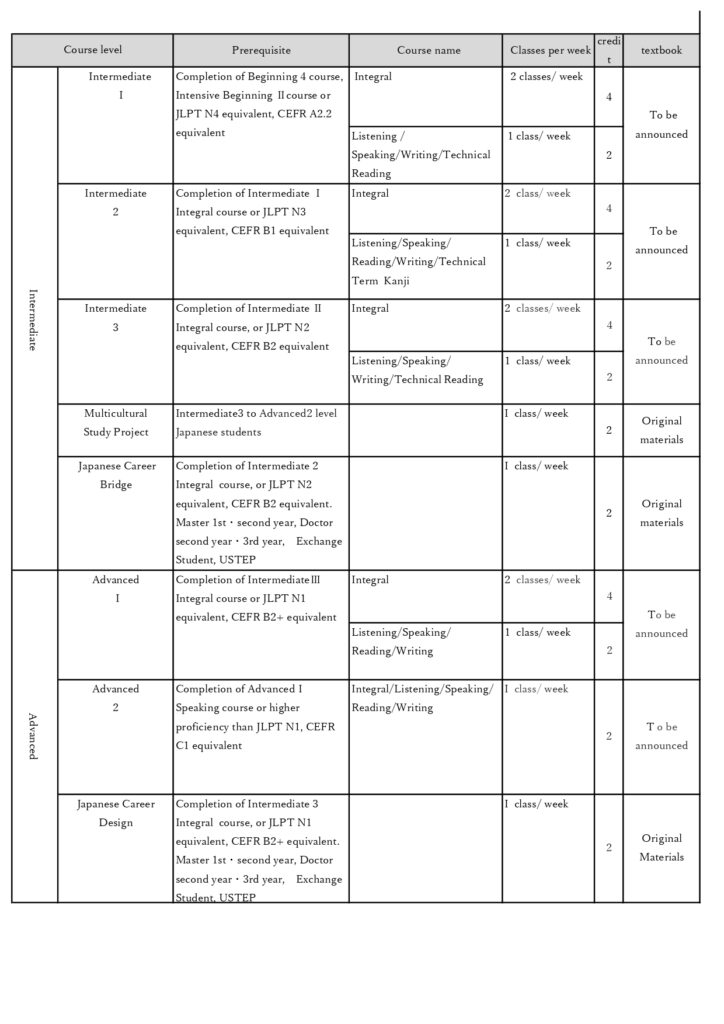1. How to Register
You must create an account in the STAR system (Students Tools for Access and Review) and take an online placement test in order to study Japanese at the Japanese Language Course, School of Engineering (JLCSE). Noncredit students aslo need to take the placement test to be able to register for classes.
Normally, you can take the test a month before each semester starts. Once you take the test, the STAR screen shows a list of classes that are available for your level during the semester. You can then register for the classes you want.
 *Credit students must register for STAR before registering for a UTokyo Academic Affairs System (UTAS) credit. You need to register for both STAR and UTAS to be able to take classes.
*Credit students must register for STAR before registering for a UTokyo Academic Affairs System (UTAS) credit. You need to register for both STAR and UTAS to be able to take classes.
2. Placement test
The placement test consists of two parts.
- Part 1: Self-assessment of your Japanese ability
You will be asked questions to see what you can/cannot understand with your current level of Japanese. Please answer to the best of your ability as this is for judging whether you can determine your knowledge and competence of Japanese language in an objective manner or not and to make a comprehensive decision on which test level you should take in Part 2.
*Even if you have not studied Japanese, you must answer the questions.
- Part 2: Assessment based on Japanese skills
You will take grammar, reading, listening, and writing tests. All of the tests are available to you online only once. Please take the test where you can ensure a stable internet connection because you cannot take the test again even if you log out or lose your connection part way through.
*If you have not studied Japanese yet, you can press “skip” and go to register for Beginning courses without taking Part 2 of the test.
Once you finish the two parts, you will receive a list of courses available at your level in the following semester. You can then register for the courses you want.
These tests results will help you to comprehend your current Japanese level and to study in an appropriate course. It will not affect your academic results in the Japanese Language Course. Thus, you are encouraged to take it properly to reflect your actual ability. If your Japanese level is deemed not suitable for the class you enrolled in after classes begin, you must change classes. You have a limited time during which you can change classes. Thus, it is important to take the placement test properly and register for the class that matches your level from the start.
3. Level
JLCSE offers Japanese Language courses in seven levels: Beginning I, II, Intermediate 1, 2, 3 and Advanced 1, 2.
Beginning
Beginning I and II have a regular course (2 or 3 classes a week) and an intensive course (4 or 5 classes a week). Beginning I also includes the Introductory courses that open in S2 and A2.
Intermediate
Intermediate 1, 2, and 3 teach different skills: Integral, Speaking, Listening, Reading, and Writing. There are also courses that are designed for the engineering field at each level (Intermediate 1: Technical Reading, Intermediate 2: Technical Term / Kanji, Intermediate 3: Technical Reading). There is also a Japanese Career Bridge Course (Intermediate 3) that provides job placement assistance, as well as a Multicultural Learning Project Course (Intermediate 3 to Advanced 1・2 level students and Japanese students) where international students and Japanese students gain a deeper mutual understanding of their cultures.
Advanced
Advanced 1 and 2 level teach different skills: Integral, Speaking, Listening, Reading, and Writing.
We also offer a Japanese Career Design Course (for advanced 1 and 2 students) that provides job placement assistance.
4. Registration for STAR
Students will manage their attendance and academic records for each course based on the information registered on STAR and will also use the same account in the following year. Confirmation of final academic results, applications for issuing certificates, and applications for events for cultural experiences are all done on the STAR system. Please make sure you remember your ID and password. If you forget them, you can reset your password from the STAR home page as long as you know your email.
*As a general rule, you cannot switch between sections of courses with multiple sections. Please be careful when you change information on STAR as it could result in losing data relating to attendance or assignments.
5. Registration for the UTokyo Academic Affairs System (UTAS)
If you need credit for Japanese language subjects at JLCSE, you must personally register for UTAS. Credit requirements for completion differ from department to department. Please double check with the office of your department.




 *Credit students must register for STAR before registering for a UTokyo Academic Affairs System (UTAS) credit. You need to register for both STAR and UTAS to be able to take classes.
*Credit students must register for STAR before registering for a UTokyo Academic Affairs System (UTAS) credit. You need to register for both STAR and UTAS to be able to take classes.